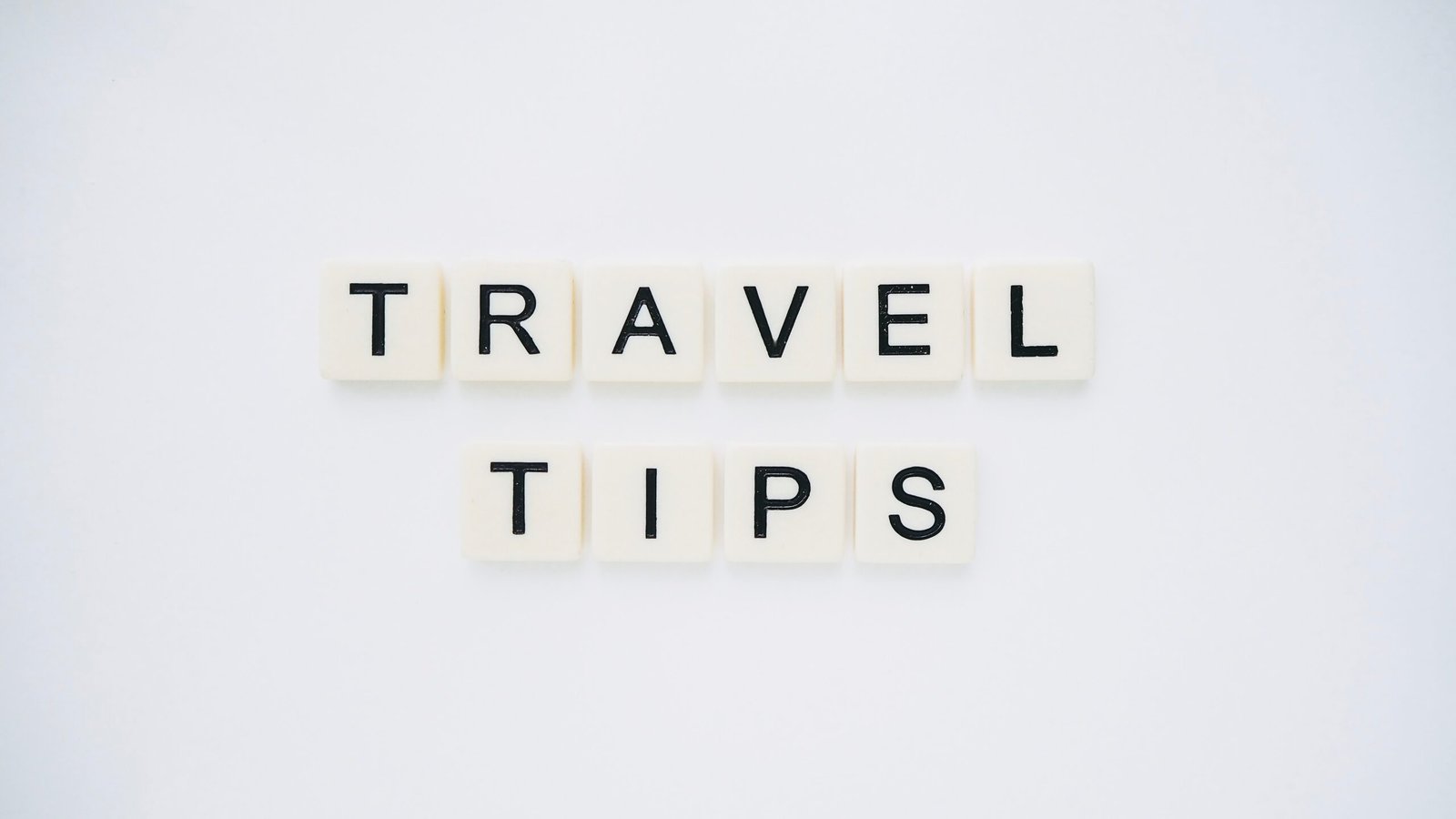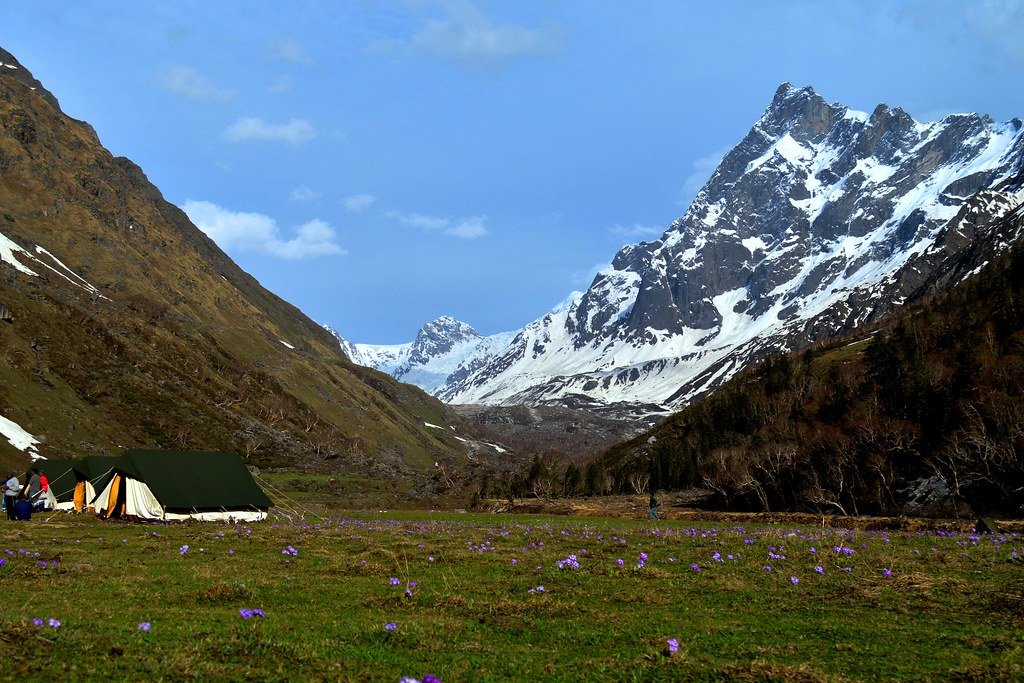20 Ways - How To Cut Expenses And Save Money For Travel

How To Cut Expenses And Save Money For Travel
We all dream of exploring exotic destinations, soaking in new cultures, and creating lasting memories while traveling. However, one major obstacle often stands in the way: money. The good news is that with a bit of planning, discipline, and creativity, you can significantly cut your expenses and save more money for your next adventure. In this article, we will explore 20 practical ways to trim your budget and make your dream trip a reality.
1. Track Your Expenses
Before you can start cutting costs for your next adventure, it’s crucial to have a clear understanding of where your money is going. By tracking your expenses diligently, you can identify areas where you can make adjustments. Use budgeting apps or simply jot down your daily expenditures in a notebook or you can use websites to get a comprehensive picture of your spending habits.
For example, let’s say you spend $100 on groceries, $50 on dining out, $50 on entertainment, and $50 on miscellaneous expenses every week. By tracking your expenses diligently, you can identify areas where you can make adjustments. For instance, you can reduce your grocery expenses by buying generic brands or shopping in bulk. You can also cut down on dining out expenses by cooking more meals at home. By making these small adjustments, you can save $250 every week. Over the course of a year, that’s a total savings of $13,000.
By tracking your expenses diligently, you’ll be able to identify areas where you can make adjustments and save money. Additionally, you’ll be able to create a budget that aligns with your travel goals and allocate specific amounts towards savings dedicated solely to travel expenses. By following these tips, you’ll be able to save money and achieve your travel goals faster.
If you’re looking some daily expenditure management websites. Then for a free option, ExpenseBit is a great choice. If you’re looking for a more comprehensive solution with advanced features, Zoho Expense, Rydoo, Emburse Certify, QuickBooks Online, and FreshBooks are all excellent options.
2. Create Realistic Budget
Once you have a clear picture of your expenses, create a budget that aligns with your travel goals. Break down your monthly income and allocate specific amounts towards necessities like rent, groceries, and bills. Be sure to allocate a portion towards savings dedicated solely to travel expenses. For that purpose, you should create a separate bank account. It’s like a piggy bank, never raid on it. It’s just a travel fund. Be careful about this always.
For example, let’s say your monthly income is $3,000. You spend $1,000 on rent, $500 on groceries, and $500 on bills every month. By allocating 20% of your monthly income towards travel savings, you’ll have $600 every month to put towards your travel fund. Over the course of a year, that’s a total savings of $7,200.
By creating a separate bank account for your travel fund, you’ll be able to keep your travel savings separate from your other savings and avoid the temptation to spend it on other things. Additionally, you can set up automatic transfers from your checking account to your travel fund to make saving even easier.
3. Cook At Home
Eating out can quickly add up and drain your bank account. This cost you can afford to stay at a wonderful place for more than a month. So, challenge yourself to cook more meals at home, and not only will you save money, but you’ll also have full control over the ingredients. Experiment with new recipes and make cooking a fun and rewarding activity.
For example, let’s say you spend $200 on dining out every month. By cooking more meals at home, you can save $200 every month. Over the course of a year, that’s a total savings of $2,400. By redirecting those funds towards your travel savings or other financial goals, you’ll be able to achieve them faster.
Cooking at home can also be a fun and rewarding activity. You can experiment with new recipes, learn new cooking techniques, and enjoy delicious meals with your loved ones. Additionally, you’ll have full control over the ingredients, making it a healthier and more sustainable option.
4. Cut Down On Entertainment Expenses
One way to save money is by exploring affordable or free entertainment options in your area instead of going out to movies or concerts. Look for local festivals, community events, or join a hobby group that aligns with your interests. You’ll not only save money but also have a chance to meet new people and discover hidden gems in your community.
For example, let’s say you spend $50 on movies and $100 on concerts every month. By exploring affordable or free entertainment options in your area, you can save $150 every month. Over the course of a year, that’s a total savings of $1,800.
By cutting down on entertainment expenses, you can redirect those funds towards your travel savings or other financial goals. Additionally, you’ll have the opportunity to explore your community and discover new interests, making it a fun and rewarding experience.
5. Ditch Unnecessary Subscriptions
One way to save money is by cutting down on subscriptions that you don’t use. Take a closer look at the subscriptions you currently have and consider which ones you can live without. Are you really using all those streaming services, magazine subscriptions, or premium memberships? Cancel the ones that aren’t adding significant value and redirect those funds towards your travel savings.
For example, let’s say you have a monthly subscription to a streaming service that costs $15 per month. If you cancel that subscription, you’ll save $15 every month. Over the course of a year, that’s a total savings of $180. By redirecting those funds towards your travel savings, you’ll be able to save up for your next trip faster.
6. Embrace Public Transportation
Using public transport services instead of driving can lead to significant savings over time. Not only will you save money on fuel and car maintenance, but you’ll also reduce your carbon footprint. For example, let’s say you spend $200 on fuel and $100 on car maintenance every month. By using public transport services instead of driving, you can save $300 every month. Over the course of a year, that’s a total savings of $3,600.
To make the most of public transport services, plan your trips efficiently and use apps to find the best routes. This will help you save time and money while enjoying a stress-free commute. Additionally, you can use the time spent on public transport to read, listen to music, or catch up on work, making it a productive and enjoyable experience.
7. Explore Affordable Accommodation
Luxury hotels can be tempting, but they come at a steep price. Instead, consider more affordable alternatives such as hostels, guesthouses, or even vacation rentals. These options can be comfortable and budget-friendly, and can help you save money on your travels.
Now the question is how to find a hotel in many affordable destinations for as little as 10$ per night. Then Guesthouses and vacation rentals can also be affordable options, especially if you’re traveling with a group or planning to stay for an extended period of time.
When looking for affordable accommodation options, it’s important to do thorough research, read reviews, and compare prices. This will help you find comfortable and budget-friendly options that suit your travel style. Additionally, you can use websites like Airbnb, Homestay, and 9flats to rent a room in someone’s house, a cottage, or a private studio apartment for low nightly rates.
By choosing affordable accommodation options, you can save money and redirect those funds towards other travel expenses. Additionally, you’ll have the opportunity to meet new people and experience your destination like a local.
8. Travel During Off-Peak Seasons
Choosing the right time to travel can significantly impact your expenses. Avoid peak travel seasons when prices for flights and accommodation skyrocket. Instead, opt for off-peak seasons when prices are generally lower and destinations are less crowded. Additionally, you’ll get a chance to experience the destination with more authenticity and fewer tourists.
For example, let’s say you’re planning a trip to Europe. If you travel during peak season (June-August), you can expect to pay higher prices for flights and accommodation. However, if you travel during off-peak season (September-November), you can save up to 30% on flights and accommodation.
By choosing to travel during off-peak season, you can save money and avoid the crowds. Additionally, you’ll have the opportunity to experience the destination with more authenticity and fewer tourists, making it a more enjoyable and memorable experience.
9. be Flexible With Your Destination
If you have a specific travel period in mind but are flexible with the destination, consider choosing a place that offers better value for your money. Research countries with favorable exchange rates or focus on lesser-known destinations that are equally stunning but often overlooked by tourists. Let your wanderlust guide you to new and exciting places.
For example, let’s say you’re planning a trip to Southeast Asia. If you travel to Thailand, you can expect to pay lower prices for accommodation, food, and transportation compared to other popular destinations in the region. Additionally, Thailand offers a unique blend of culture, history, and natural beauty that is sure to leave you mesmerized.
By choosing a destination that offers better value for your money, you can save money and still have an amazing travel experience. Additionally, you’ll have the opportunity to explore new and exciting places that are often overlooked by tourists.
10. travel Light
Packing smart can save you both time and money. Aim to travel with just a carry-on bag, as checked baggage fees can quickly add up. Additionally, traveling light allows you to be more flexible with your accommodation choices, as you won’t be burdened with heavy luggage. Pack versatile clothing and essentials to minimize the need for shopping while on your trip.
For example, let’s say you’re planning a trip to Europe. If you travel with just a carry-on bag, you can avoid checked baggage fees that can cost up to $100 per flight. Over the course of a month-long trip, that’s a total savings of $400. Additionally, packing versatile clothing and essentials can help you avoid the need for shopping while on your trip, saving you even more money.
By packing smart and traveling light, you can save money and enjoy a stress-free travel experience. Additionally, you’ll have the flexibility to choose from a wider range of accommodation options, making it easier to find affordable and comfortable places to stay.
11. Take Advantage Of Travel Rewards Programs
Travel rewards programs offered by airlines, hotels, and credit card companies can help you save significantly on your overall travel expenses. By signing up for these programs, you can accumulate points or miles through your regular purchases and redeem them for free flights, hotel stays, or other travel-related perks.
For example, let’s say you sign up for a travel rewards program offered by an airline. If you accumulate 25,000 miles through your regular purchases, you can redeem them for a free round-trip flight within the United States. Over the course of a year, you can save upto hundreds or even thousands of dollars, by accumulating miles for multiple free flights
By signing up for travel rewards programs, you can save money on your overall travel expenses and enjoy free flights, hotel stays, or other travel-related perks. Additionally, you’ll have the opportunity to earn points or miles through your regular purchases, making it easier to achieve your travel goals.
12. Cut Back On Alcohol And Dining Out
Alcohol and dining out can quickly become budget busters. Instead of splurging on expensive restaurant meals or cocktails, opt for cooking at home and inviting friends over for potluck dinners. Explore local markets, street food, and affordable eateries to experience the local cuisine without breaking the bank.
For example, let’s say you spend $200 on dining out and $100 on alcohol every month. By cooking at home and inviting friends over for potluck dinners, you can save $200 every month. Over the course of a year, that’s a total savings of $2,400. Additionally, exploring local markets, street food, and affordable eateries can help you experience the local cuisine without breaking the bank.
By cutting down on dining out and alcohol expenses, you can redirect those funds towards your travel savings or other financial goals. Additionally, you’ll have the opportunity to explore new recipes, learn new cooking techniques, and enjoy delicious meals with your loved ones.
13. Opt For free or Low-Cost Activities
There are countless free or low-cost activities you can enjoy while traveling. You can explore city parks, visit museums or art galleries during their free admission days, or take advantage of walking tours offered by local volunteers. Engaging in these activities not only saves money but also allows you to immerse yourself in the local culture and experience the destination from a unique perspective.
For example, let’s say you’re planning a trip to New York City. If you visit the Art Museum of a Metropolitan city on a basis of pay-what-you-wish, you can save up to $25 on admission fees. Additionally, you can explore Central Parks, amusement parks, which is free and offers a wide range of activities such as hiking, biking, and picnicking.
By engaging in free or low-cost activities, you can save money and still have an amazing travel experience. Additionally, you’ll have the opportunity to immerse yourself in the local culture and experience the destination from a unique perspective.
14. Plan In Advance
Booking flights and accommodation well in advance can often lead to significant savings. Keep an eye out for flash sales, early bird discounts, or promotional offers. By planning ahead, you give yourself more time to find the best deals and have a greater chance of snagging discounted rates.
For example, let’s say you’re planning a trip to Hawaii. If you book your flights, transportation services and accommodation in advance, you can save up to 30% on your overall travel expenses and journey will be hassle – free as well. Additionally, you can take advantage of flash sales, early bird discounts, or promotional offers to save even more money.
By planning ahead and booking your travel arrangements in advance, you can save money and enjoy a stress-free travel experience. Additionally, you’ll have more time to find the best deals and have a greater chance of snagging discounted rates.
15. Use Cashback Apps And Websites
Cashback apps and websites allow you to earn money or credits on your regular purchases. Simply browse through these platforms before making a purchase and see if there are any cashback offers available. Over time, these small savings can add up and contribute to your travel fund.
For example, let’s say you spend $500 on groceries, $200 on clothing, and $100 on household items every month. By using cashback websites and apps, you can earn up to 5-10% cashback on your purchases. Over the course of a year, that’s a total savings of $360.
By using cashback apps and websites, you can save money on your regular purchases and contribute to your travel fund. Additionally, you’ll have the opportunity to earn rewards and credits that can be redeemed for cash or other perks.
16. Embrace Slow Travel
Slow travel is a great way to save money and experience a deeper understanding of the destinations you visit. By embracing slow travel, you’ll not only save money on transport, but you’ll also have a chance to immerse yourself in the local culture, connect with locals, and experience a deeper understanding of the destinations you visit.
For example, let’s say you’re planning a trip to Europe. If you travel slowly and spend more time in fewer places, you can save money on transport and accommodation costs. Additionally, you’ll have more time to explore each destination, connect with locals, and experience the local culture.
By embracing slow travel, you can save money and have a more meaningful travel experience. Additionally, you’ll have the opportunity to explore new places, meet new people, and create unforgettable memories.
17. Shop Smartly
When shopping for travel essentials or souvenirs, it’s important to compare prices across different stores or marketplaces. Avoid purchasing items from touristy areas, as prices tend to be inflated. Instead, venture into local markets or small shops to find unique and reasonably priced items that will remind you of your travels.
For example, let’s say you’re planning a trip to Thailand. By venturing into local markets or small shops, you can find unique and reasonably priced items that will remind you of your travels.
By comparing prices across different stores or marketplaces, you can save money and still have a memorable travel experience. Additionally, you’ll have the opportunity to explore new places, meet new people, and create unforgettable memories.
18. DIY Travel Experiences
Researching and planning your own travel experiences instead of relying on organized tours and activities can save you money and give you more freedom and flexibility. Use online resources, guidebooks, and recommendations from fellow travelers to create your own personalized itineraries and unique adventures.
For example, let’s say you’re planning a trip to Japan. If you book an organized tour, you can expect to pay higher prices compared to planning your own itinerary. Additionally, planning your own itinerary allows you to customize your trip according to your interests and preferences, making it a more enjoyable and memorable experience.
By using online resources, guidebooks, and recommendations from fellow travelers, you can plan your own personalized itineraries and unique adventures. Additionally, you’ll have the opportunity to save money and experience the destination from a unique perspective.
19. Exchange skills For Accommodation
consider joining platforms that connect travelers with locals who provide accommodation in exchange for various skills or services. This way, you not only save money on accommodation but also have the opportunity to learn from locals and immerse yourself in the local way of life.
To elaborate on this, let’s assume that you spend $1000 per month on accommodation. If you join such a platform and find a local host who provides accommodation in exchange for your services, you could save up to $1000 per month on accommodation costs. This means that you could save up to $12,000 per year on accommodation alone.
However, it’s important to note that the amount you save will depend on the platform you choose, the location you’re traveling to, and the services you’re willing to provide. It’s also important to ensure that the platform you choose is safe and reliable.
In addition to this, there are many other ways to cut down on expenses. For example, you could start by creating a budget and tracking your expenses. This will help you identify areas where you can cut down on expenses. You could also consider using coupon apps when buying food, reducing your energy consumption, and negotiating with your suppliers for the best possible prices.
20. Stay Motivated and Dedicated
Saving money requires discipline and dedication. Implementing these cost-cutting strategies may not always be easy, but staying motivated and focused on your travel goals will make the process more manageable. Find ways to reward yourself for small victories and keep envisioning the incredible experiences you’ll have once you reach your destination.
Conclusion
Cutting expenses and saving money for travel is not an impossible feat. With careful planning, conscious spending, and a commitment to your travel goals, you can turn your dream trips into reality. By implementing these 20 ways to cut your expenses, you’ll have more money in your pocket and be one step closer to the ultimate adventure of a lifetime. So, start saving, plan your next trip, and get ready to create unforgettable memories around the world.
Safe travels!













Pingback: HOW TO SAVE FOR A TRIP: TIPS AND TRICKS FOR BUDGET TRAVEL